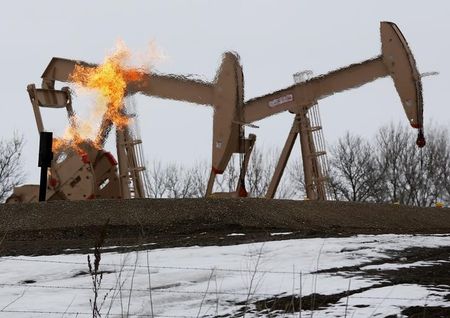
Investing.com– The Biden administration last week announced its most targeted sanctions yet against the Russian oil industry, pushing oil prices to a three-month high as traders positioned for tighter markets.
JPMorgan analysts said that the new sanctions- which target tankers moving Russian crude- will give the incoming Donald Trump administration even more leverage to negotiate with Russia, especially with regards to a Ukraine ceasefire.
But JPM analysts also noted that Trump is likely to follow Biden in keeping oil prices subdued to limit inflation- a scenario that heralds limited upside in crude.
Oil prices soared to a three-month high after the U.S. Treasury on Friday imposed sanctions on Russian oil giants Gazprom (MCX:GAZP) and Surgutneftegas, along with 183 tankers that ship Russian oil.
The move is aimed at further cutting off Moscow from international markets, given that oil is a major revenue stream funding Russia’s long-running conflict with Ukraine.
The new sanctions will force oil importers in India and China to seek new streams of crude.
JPM analysts noted that Trump was likely to use the prospect of lifting U.S. sanctions against Russia to leverage negotiations with Moscow.
The President-elect had last week pushed forward his campaign pledge of ending the Russia-Ukraine war by six months, with Moscow confirming that the two sides were preparing for a possible summit.
But JPM analysts also noted that their underlying assumption remained that Tump, like Biden, will prefer to keep oil prices low to avoid potential inflation catalysts. Trump has also vowed to increase U.S. oil production, while adopting a more hawkish stance against Iran.
“We continue to believe that with US oil supply growth moderating and GCC countries unlikely to offset lost Iranian, Venezuelan, or Russian output, any policies that might raise oil price will likely take a backseat to Trump’s key objective of maintaining low energy prices,” JPM analysts wrote in a recent note.
The Biden administration’s approach of limiting Russian oil production while maintaining global oil flows was a key part of bringing down inflation substantially since 2022, although other underlying factors have kept inflation sticky in recent months.
This post is originally published on INVESTING.


